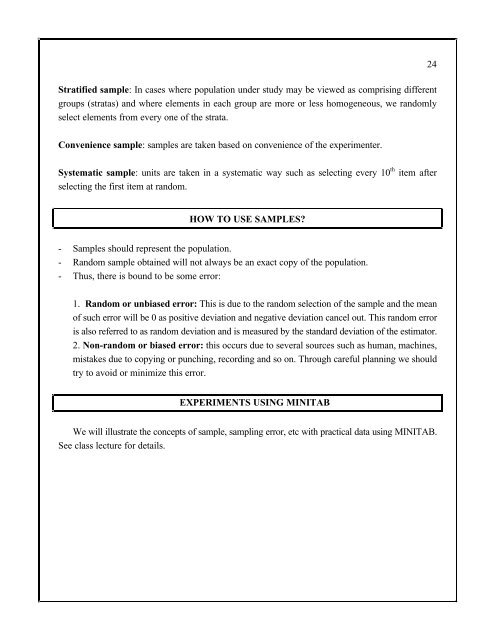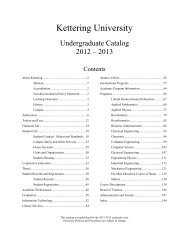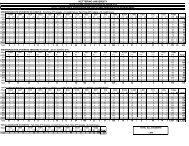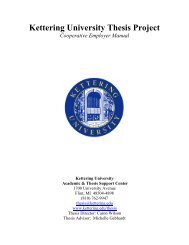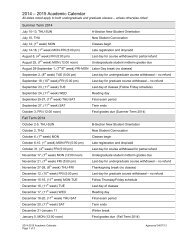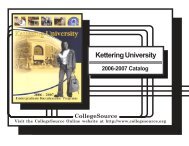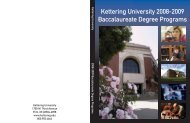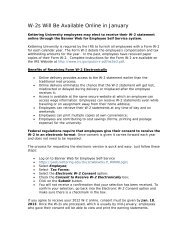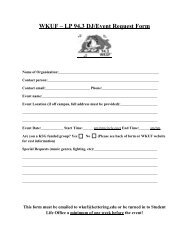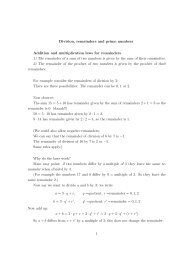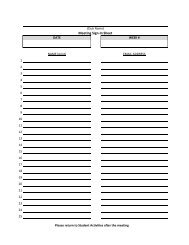1 CLASS LECTURE NOTES - What is Applied Statistics ...
1 CLASS LECTURE NOTES - What is Applied Statistics ...
1 CLASS LECTURE NOTES - What is Applied Statistics ...
Create successful ePaper yourself
Turn your PDF publications into a flip-book with our unique Google optimized e-Paper software.
Stratified sample: In cases where population under study may be viewed as compr<strong>is</strong>ing different<br />
groups (stratas) and where elements in each group are more or less homogeneous, we randomly<br />
select elements from every one of the strata.<br />
24<br />
Convenience sample: samples are taken based on convenience of the experimenter.<br />
Systematic sample: units are taken in a systematic way such as selecting every 10 th item after<br />
selecting the first item at random.<br />
HOW TO USE SAMPLES?<br />
- Samples should represent the population.<br />
- Random sample obtained will not always be an exact copy of the population.<br />
- Thus, there <strong>is</strong> bound to be some error:<br />
1. Random or unbiased error: Th<strong>is</strong> <strong>is</strong> due to the random selection of the sample and the mean<br />
of such error will be 0 as positive deviation and negative deviation cancel out. Th<strong>is</strong> random error<br />
<strong>is</strong> also referred to as random deviation and <strong>is</strong> measured by the standard deviation of the estimator.<br />
2. Non-random or biased error: th<strong>is</strong> occurs due to several sources such as human, machines,<br />
m<strong>is</strong>takes due to copying or punching, recording and so on. Through careful planning we should<br />
try to avoid or minimize th<strong>is</strong> error.<br />
EXPERIMENTS USING MINITAB<br />
We will illustrate the concepts of sample, sampling error, etc with practical data using MINITAB.<br />
See class lecture for details.


